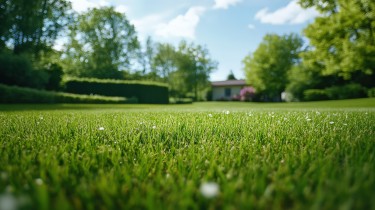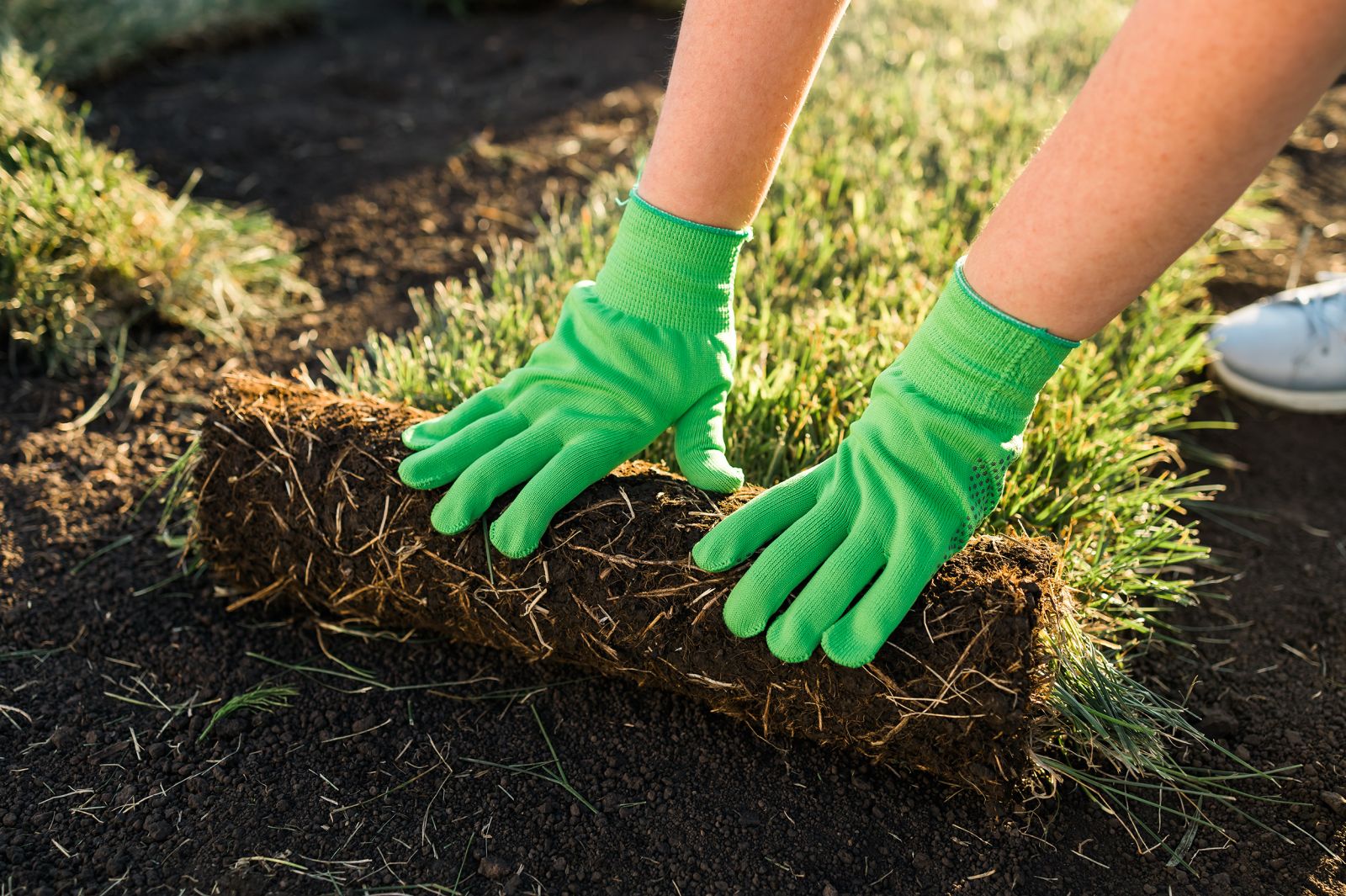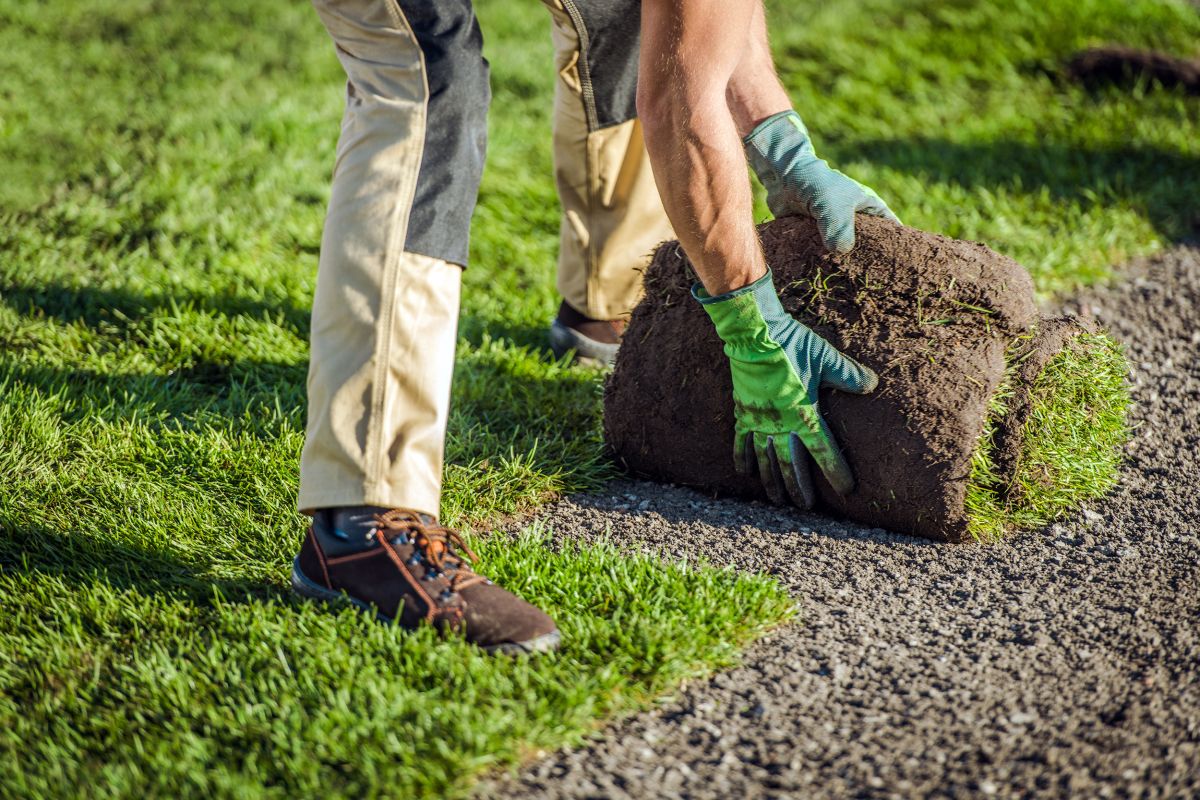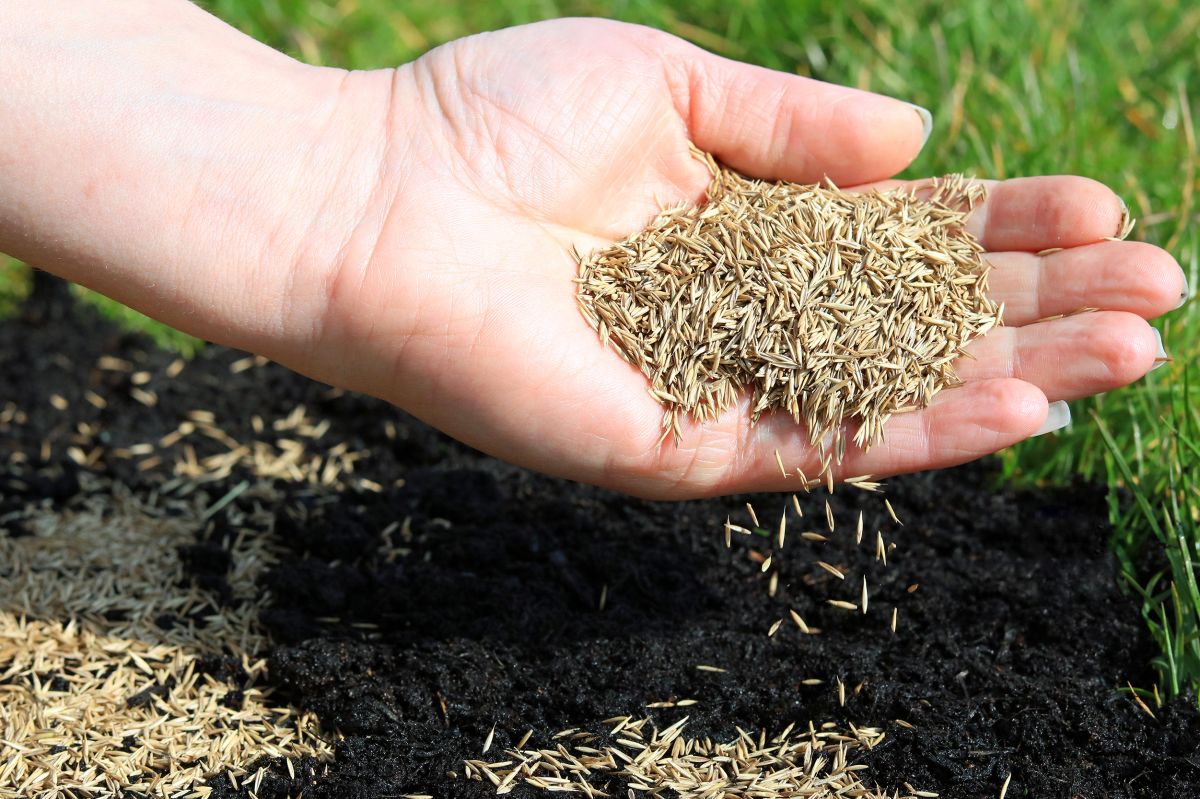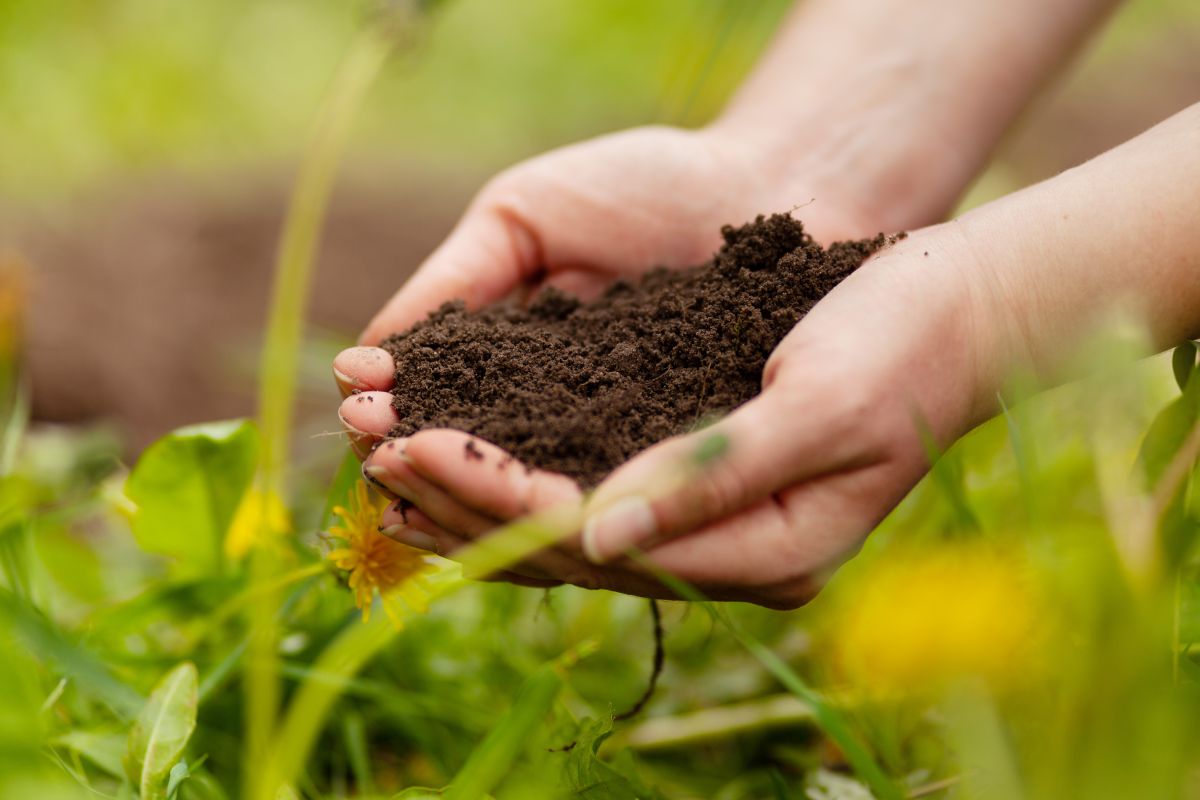We’re often asked which is the best method for growing a nice, thick lawn — sod or seed? The truth is, it depends… While both will ultimately give you the results you desire, there are a few things to consider before deciding which is best for your lawn.
Everyone has an opinion on which way to go, and are happy to share it with you! Here at Brandon Rushing, we use both because it isn’t a question of one being better than the other — both seeding and sodding have their advantages and disadvantages, so the choice between the two largely depends on your specific needs and preferences.
For the purposes of this post, we’re going to assume you need a whole new lawn. To help you decide which method is right for your lawn and get some tips on how to prepare it for sodding or reseeding, read on!
Advantages of sod
The biggest and most obvious advantage of using sod is the instant results it provides. There’s something very satisfying about going from bare soil to a fully mature, green lawn in a matter of hours!
But that’s not the only benefit of using sod…
- Better erosion control — Sod helps prevent soil erosion by holding the soil in place and allowing water to soak into the ground. This is especially important on steep slopes and other areas prone to erosion.
- You’ll have fewer weeds — Quality sod purchased from a reputable dealer is thick and dense with few weeds. And because it’s so healthy, sod is able to crowd out new weeds and prevent them from germinating.
- It’s quick to establish — So long as you’ve properly installed and cared for your sod, it should be well-rooted and established in a couple of weeks… just in time for that summer barbecue!
- Great aesthetic appeal — Sod provides a lush, green lawn that enhances the aesthetic appeal of your property. If you’re looking to sell, it’s a quick and easy way to improve the appearance and value of your property.
- Timing isn’t crucial — Although sod does best when laid during its peak growth period (which depends on the type of grass you’ve chosen) you can pretty much lay it any time, unless it’s going to be extremely hot.
Disadvantages of sod
Of course, there are disadvantages to choosing sod over seed too…
- It can be expensive — If you’re only dealing with a small section of your lawn, this really isn’t an issue, but if you have a large area to cover, it can add up pretty quickly.
- You’ll need professional installation — Of course, you can lay your own sod, but it’s a lot heavier than it looks and isn’t really a DIY project. If it’s not installed properly you could experience poor rooting, visible seams and an unsightly lawn — not the look you’re going for!
- Your grass choice is limited — While most sod farmers grow the type of grass that grows well in their particular area, your lawn may have unique needs (like tons of shade) that a “one-size-fits-all” sod can’t address.
- Fresh sod is time-sensitive — The ideal time to lay fresh sod is about 24 hours after being cut… and it’s anyone’s guess how long the grass at the big box store has been baking in the sun on that skid. At Brandon Rushing, we get ours straight from the farmer so we know the sod we lay is fresh.
Advantages of seeding
When you seed your lawn, you have complete control over the entire process, from start to finish. While this might seem overwhelming to some, seeding your lawn isn’t difficult and has some distinct advantages.
- Seeding is cost-effective — You’ll pay much less for premium grass seed compared to the cost of sod for the same size lawn.
- You don’t need professional installation — Seeding your lawn isn’t difficult, so you can DIY if you’re so inclined. Just make sure to properly prepare your soil before you begin, follow the directions on the package of grass seed and make sure to spread it out evenly.
- Choose your grass seed — There are different types of grass seed available, so you can choose the type that is best suited for your climate, soil type, sun exposure, and other factors. You can even choose different seeds for different locations.
- Deep and healthy roots — Initially, planting grass seeds on the lawn and allowing them to grow in the same place helps them develop a deeper root system compared to establishing sod grown elsewhere.
- Plant at your convenience — Grass seed isn’t time sensitive and can be stored for two or three years. However, even if stored properly, the germination rate will likely decrease. This means you’ll have to use more seed to get the same coverage.
- Environmentally friendly — Seed doesn’t require the use of heavy machinery to grow and harvest, and doesn’t need to be transported, so it’s better for the environment.
Disadvantages of seeding
While there are many advantages to seeding your lawn, there are also some potential disadvantages to consider.
- Seed has to be planted at the right time — Seed should be sown during peak growth times for the type of grass you’re trying to grow. Improper timing leads to failed seed or weak grass, making it susceptible to insects and disease.
- It takes a long time to be established — A newly seeded lawn needs 10 to 12 weeks before it’s ready for light foot traffic and needs one full growing season before it fully matures.
- Needs more maintenance — You'll need to water frequently, avoid walking on the lawn, and watch out for weeds and pests.
- Danger of potential erosion — Until roots establish, seed and soil can wash away or pool in heavy rains… all your efforts could literally go down the drain.
- Competition from weeds — Grass seed is vulnerable to competition from weeds for water, light and nutrients. Proper fall planting helps because weeds are less active in fall.
How to begin…
Regardless of whether you’re sodding or seeding, it’s important to examine your lawn for weeds and areas that look weak or diseased and take measures to eliminate them.
You then want to check your soil by conducting a soil test — something we do for all our clients — to make sure it’s healthy enough to support a new lawn. The soil test will let you know if your soil is deficient in any important nutrients so you can amend the soil as needed.
Once the soil is prepared, you’re ready to sow your seeds or lay your sod. It’s important to keep the lawn well-watered to help seeds germinate or sod take root.
Take care not to walk on the new sod or the seeded yard until it’s established, and avoid mowing. For sod, this will be about two or three weeks, for a seeded lawn you’ll need to wait at least two months before mowing.
Once the grass has been established, follow recommended lawn care practices so you’ll end up with a lawn that is thick, lush and healthy… just like the neighborhood golf course!
We’re here to help!
We’ve been caring for lawns in Northern Virginia for over 25 years… so we know a thing or two about turf grass! If you’d like help planting a new lawn or repairing/maintaining an existing lawn, book a free consultation with us. We’ll send over one of our lawn care specialists to discuss your lawn care needs.
